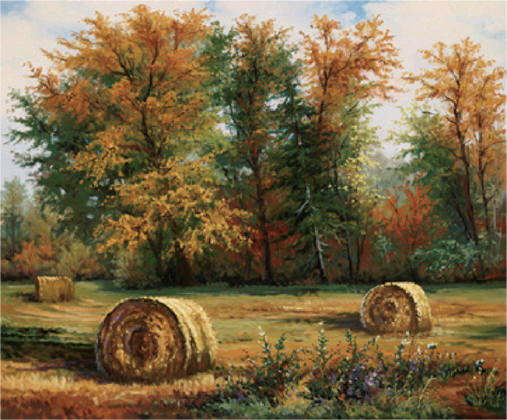It is commonly known in the artistic community that oil paint is used for its stability, depth of colour, flexibility, textural variety and slow-drying nature. The medium can be used in a range of techniques, from thin glazes diluted with turpentine to dense thick impasto. This enables artists to work on a painting over several days. Added to these benefits of oil paint are its resistance to stains and scratches making it a durable medium. It also gives a smoother, glosser finish and provides great coverage to a canvas. Oil paint is a versatile medium as it can be mixed with other paints, such as acrylics and watercolors.
Its origins began in 15th century northern Europe, and by the 16th century it was the favoured medium for many artists. Jan van Eyck is purportedly the artist, who developed oil painting by mixing linseed oil and oil from nuts with a selection of diverse colours.
Landscape paintings can be traced back to ancient times, the earliest being in the 4th-century-ce in China. Examples are also found in Greek and Roman wall paintings depicting not only landscapes, but gardenscapes. The earliest example of a painted landscape is a fresco in Akrotiri, an Aegean Bronze Age settlement on the volcanic Greek island of Santorini. It was beautifully preserved under volcanic ash from 1627 BC until about 50 years ago. However, the art form did not really emerge in Western tradition until 16th century Renaissance. It was the three aesthetic concepts established during this Romantic era that divided the natural world into categories: the Pastoral, the Picturesque and the Sublime. The 19th century was hailed as the golden age of landscape painting in Europe and America.
Richard Wilson is known as the father of landscape painting. He was born on 1st August 1713 or 1714 in Penegoes, Powys, North Wales, the third son of its rector. He became the leading British landscapist of his generation and one of the great artistic pioneers of the eighteenth century.
To learn more on Jonn Einerssen or to register for a workshop please visit here

